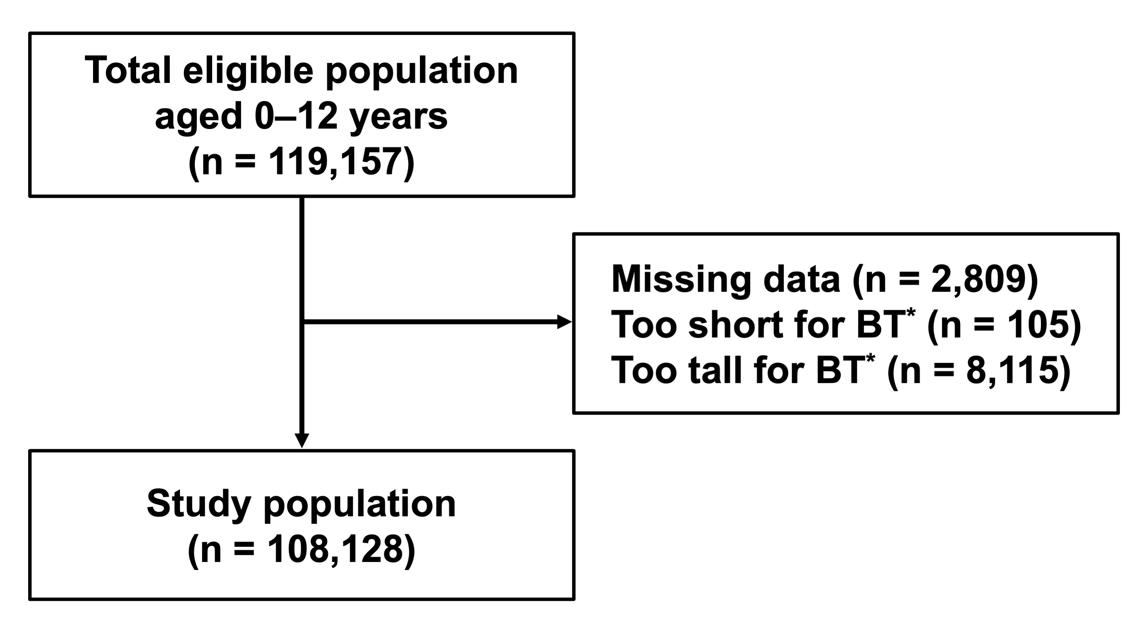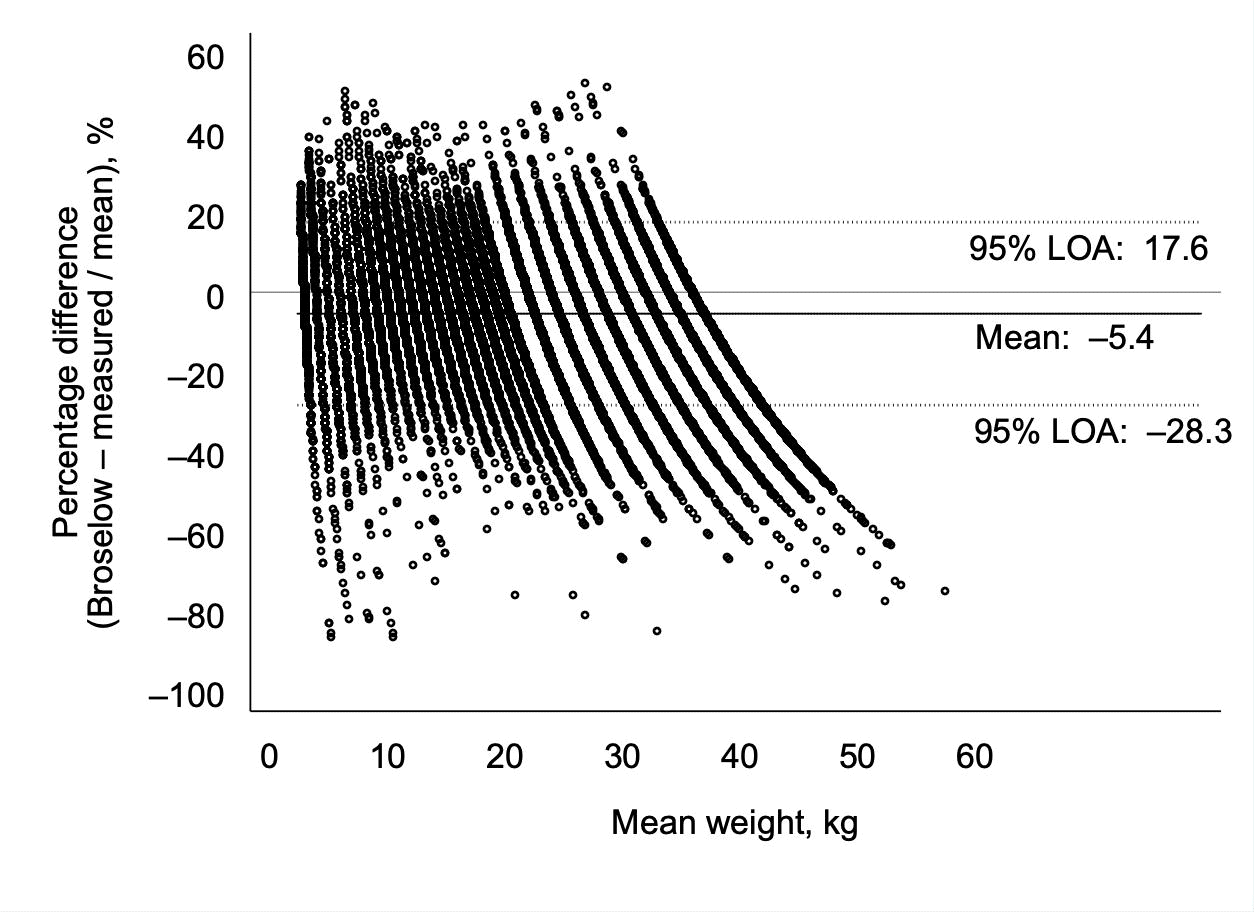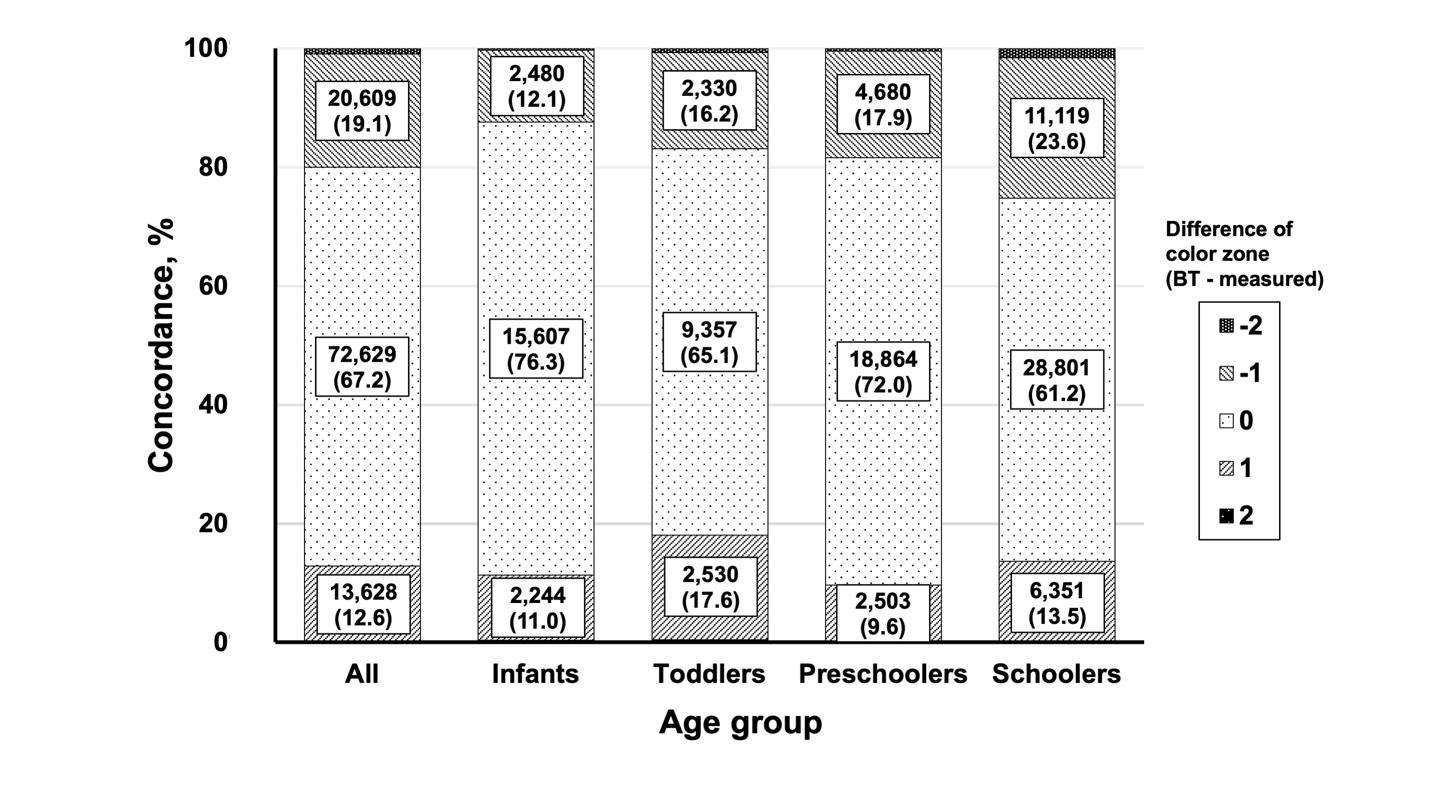1. Garland JS, Kishaba RG, Nelson DB, Losek JD, Sobocinski KA. A rapid and accurate method of estimating body weight. Am J Emerg Med. 1986; 4:390–3.

2. Lubitz DS, Seidel JS, Chameides L, Luten RC, Zaritsky AL, Campbell FW. A rapid method for estimating weight and resuscitation drug dosages from length in the pediatric age group. Ann Emerg Med. 1988; 17:576–81.

3. Tinning K, Acworth J. Make your best guess: an updated method for paediatric weight estimation in emergencies. Emerg Med Australas. 2007; 19:528–34.

4. Hughes G, Spoudeas H, Kovar IZ, Millington HT. Tape measure to aid prescription in paediatric resuscitation. Arch Emerg Med. 1990; 7:21–7.

5. Krieser D, Nguyen K, Kerr D, Jolley D, Clooney M, Kelly AM. Parental weight estimation of their child’s weight is more accurate than other weight estimation methods for determining children’s weight in an emergency department? Emerg Med J. 2007; 24:756–9.

6. Wells M, Goldstein LN, Bentley A, Basnett S, Monteith I. The accuracy of the Broselow tape as a weight estimation tool and a drug-dosing guide - a systematic review and meta-analysis. Resuscitation. 2017; 121:9–33.

7. Nieman CT, Manacci CF, Super DM, Mancuso C, Fallon WF Jr. Use of the Broselow tape may result in the underresuscitation of children. Acad Emerg Med. 2006; 13:1011–9.

8. Ramarajan N, Krishnamoorthi R, Strehlow M, Quinn J, Mahadevan SV. Internationalizing the Broselow tape: how reliable is weight estimation in Indian children. Acad Emerg Med. 2008; 15:431–6.

9. Varghese A, Vasudevan VK, Lewin S, Indumathi CK, Dinakar C, Rao SD. Do the length-based (Broselow) tape, APLS, Argall and Nelson’s formulae accurately estimate weight of Indian children? Indian Pediatr. 2006; 43:889–94.
10. House DR, Ngetich E, Vreeman RC, Rusyniak DE. Estimating the weight of children in Kenya: do the Broselow tape and age-based formulas measure up? Ann Emerg Med. 2013; 61:1–8.

11. Khouli M, Ortiz MI, Romo-Hernández G, Martínez-Licona D, Stelzner SM. Use of the Broselow tape in a Mexican emergency department. J Emerg Med. 2015; 48:660–6.

12. Geduld H, Hodkinson PW, Wallis LA. Validation of weight estimation by age and length based methods in the Western Cape, South Africa population. Emerg Med J. 2011; 28:856–60.

13. Jang HY, Shin SD, Kwak YH. Can the Broselow tape be used to estimate weight and endotracheal tube size in Korean children? Acad Emerg Med. 2007; 14:489–91.

14. Moon JS, Lee SY, Nam CM, Choi JM, Choe BK, Seo JW, et al. 2007 Korean National Growth Charts: review of developmental process and an outlook. Korean J Pediatr. 2008; 51:1–25. Korean.

17. Bland JM, Altman DG. Statistical methods for assessing agreement between two methods of clinical measurement. Lancet. 1986; 1:307–10.

18. Wells M, Coovadia A, Kramer E, Goldstein L. The PAWPER tape: a new concept tape-based device that increases the accuracy of weight estimation in children through the inclusion of a modifier based on body habitus. Resuscitation. 2013; 84:227–32.

19. Abdel-Rahman SM, Paul IM, James LP, Lewandowski A; Best Pharmaceuticals for Children Act-Pediatric Trials Network. Evaluation of the Mercy TAPE: performance against the standard for pediatric weight estimation. Ann Emerg Med. 2013; 62:332–9.

20. Wells M, Goldstein L, Bentley A. Accuracy of weight estimation by the Broselow tape is substantially improved by including a visual assessment of body habitus. Pediatr Res. 2018; 83:83–92.






 PDF
PDF Citation
Citation Print
Print





 XML Download
XML Download